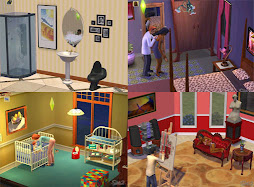 1.- Title: Emblematic houses
1.- Title: Emblematic housesThe oldest house in the world is approximately 15,000 years old and made of mammoth bones, found at Mezhirich near Kiev in Ukraine. It was probably covered with mammoth hides. The house was discovered in 1965 by a farmer digging a new basement six feet below the ground. A similar house can be seen in the movie 10,000 B.C.
Architect Norbert Schoenauer, in his book 6,000 Years of Housing, identifies three major categories of types of housing: the "Pre-Urban" house, the "Oriental Urban" house, and the "Occidental Urban" house.
Types of Pre-Urban houses include temporary dwellings such as the Inuit igloo, semi-permanent dwellings such as the pueblo, and permanent dwellings such as the New England homestead.
"Oriental Urban" houses include houses of the ancient Greeks and Romans, and traditional urban houses in China, India, and Islamic cities.
"Occidental Urban" houses include medieval urban houses, the Renaissance town house, and the houses, tenements and apartments of the 19th and 20th centuries.
http://en.wikipedia.org/wiki/House
3.- The task:
You are a famous architect and you will have the opportunity to change one of the famous houses. You will make a reform, in order to facilitate the living.
4.- Process:
· Roles
-There will be five groups with 4 architects and one group with 5 ones.
-In the computer room you will work in pairs.
-In each group they will gather information about different important houses: The White House, Buckingham Palace, The Pink House, the Houses of Parliament or Westminster Palace, San Anton Palace, Prince's Palace of Monaco.
-Each architect will formulate two questions which they can answer with the information they can get from different websites.
-The extra interviewer in the group of 5 will be the creator of a poster with a drawing of the six important houses. The poster will be sticked on the blackboard to decorate your office.
· Steps
In the computer room:
All the members of the group have to take notes about their house in question. The houses will be raffled to each group. They have to formulate two questions each one. Such questions will be: How many rooms…? How may bathrooms…? Where is located?..
In the office:
All the interviewers will write their questions and they will answer them.
With the characteristics obtained from each house, they will make their reform using two sentences each one.
The sentences will be like:’ I will create two more bathrooms because the guests will be more independent and comfortable’.
In the promotion of the reform:
You will read the questions and the answers, you have made.
You will also promote the changes, giving reasons. For instance: “I am going to add a bathroom on the ground floor because it will be more comfortable for guests”.
One of the architects can also draw on the blackboard or in a poster in order to explain the reform better.
5.- Resources:
6.- Evaluation:
.....................................................POOR...GOOD...VERY GOOD
Group participation and cooperation
Gathering information
Use of the new vocabulary
Use of the comparatives and superlatives
Personal writing
Oral presentation
Show interest in other presentations
7.- Conclusion:
After your research is complete, the class can be decorated with the drawings of the reform. You will know more about important houses and how they are distributed, using the new vocabulary of the unit and future tenses.
